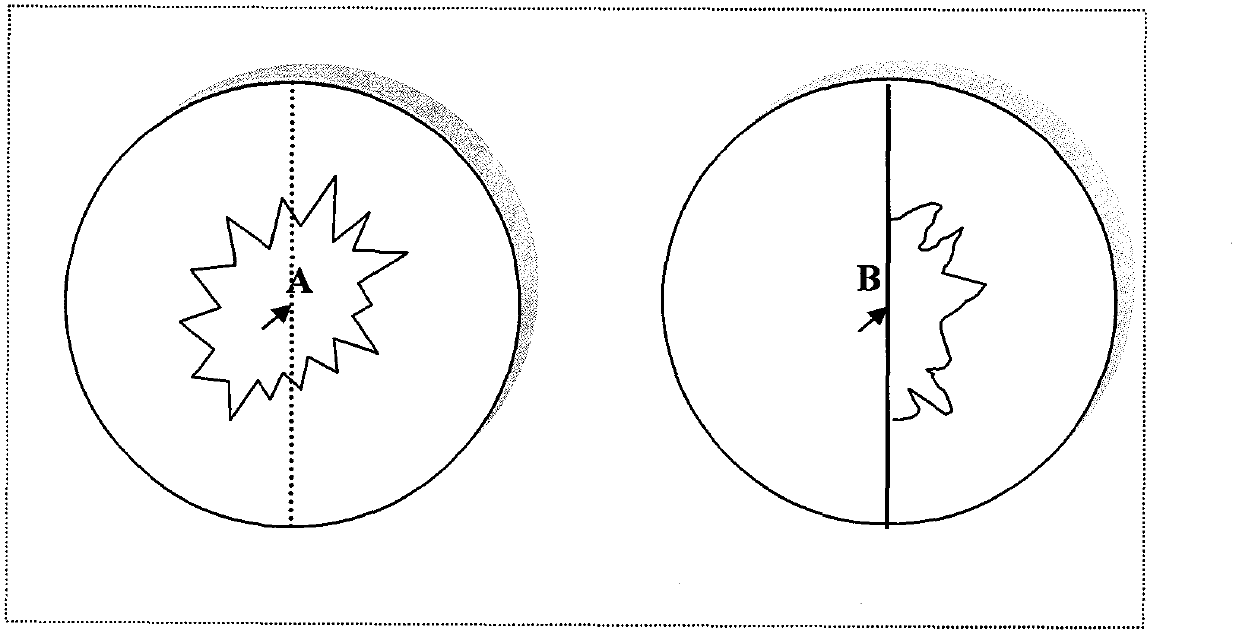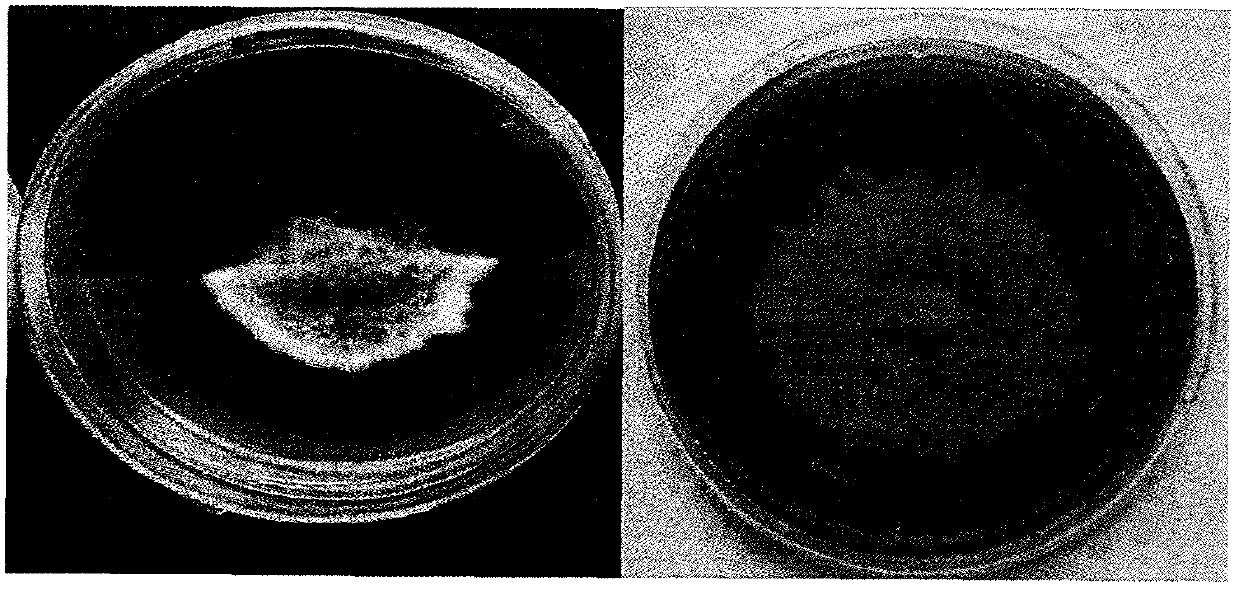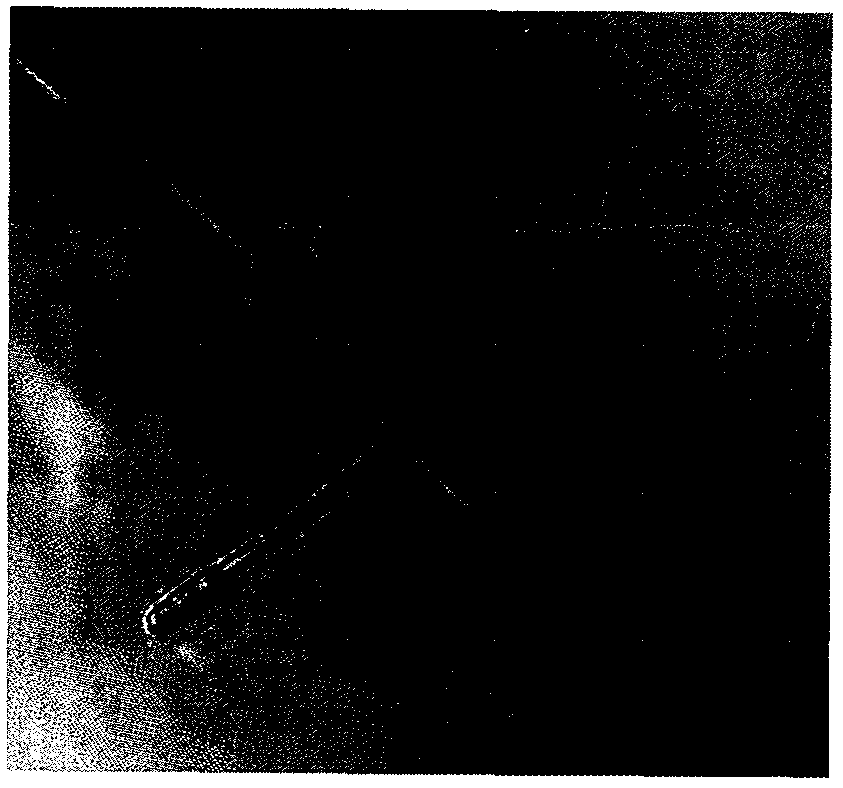Method for observing and identifying filamentous fungi
A filamentous fungi, microscopic observation technology, applied in the field of mycology research, can solve the problems of inability to obtain colony characteristics, increase the workload, complicated and complicated operation process, reduce workload and identification efficiency, ensure work accuracy, cost reduction effect
- Summary
- Abstract
- Description
- Claims
- Application Information
AI Technical Summary
Problems solved by technology
Method used
Image
Examples
Embodiment Construction
[0013] Concrete implementation steps of the present invention:
[0014] 1. Configure PDA medium, sterilize it for later use, melt it before use, add PDA medium in a sterile dry petri dish, the volume is 10-15ml, and make a plate with a thickness of 2-3mm after it condenses;
[0015] 2. Use a sterile scalpel to cut along the diameter of the medium perpendicular to the bottom of the culture dish, remove half of the medium, and clean up the debris of the medium with a blade;
[0016] 3. The front opening of the culture dish with half of the medium is placed in the ultra-clean workbench, and the ultraviolet lamp is irradiated for 10 to 15 minutes under ventilated conditions to evaporate the excess water to make it slightly dry, and at the same time kill the bacteria that may be polluted;
[0017] 4. Use an inoculation needle to pick up the fungal culture to be identified and inoculate it in the middle of the junction between the culture medium and the culture dish, cover the lid o...
PUM
 Login to View More
Login to View More Abstract
Description
Claims
Application Information
 Login to View More
Login to View More - R&D
- Intellectual Property
- Life Sciences
- Materials
- Tech Scout
- Unparalleled Data Quality
- Higher Quality Content
- 60% Fewer Hallucinations
Browse by: Latest US Patents, China's latest patents, Technical Efficacy Thesaurus, Application Domain, Technology Topic, Popular Technical Reports.
© 2025 PatSnap. All rights reserved.Legal|Privacy policy|Modern Slavery Act Transparency Statement|Sitemap|About US| Contact US: help@patsnap.com



